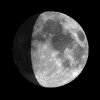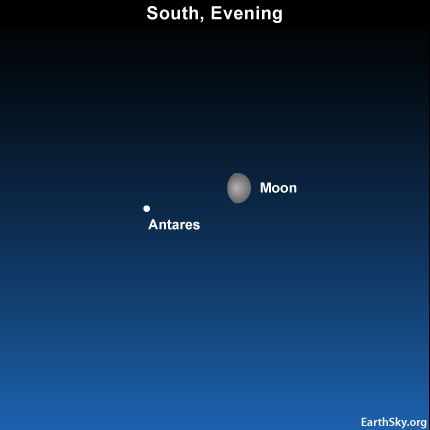Courtesy of EarthSky
A Clear Voice for Science
www.EarthSky.org

 There’s a bright star to the east (left) of tonight’s waxing gibbous moon.
There’s a bright star to the east (left) of tonight’s waxing gibbous moon.
It’s Antares, often called the Heart of the Scorpion in the constellation Scorpius. You can’t miss this star because it’s bright and reddish in color. Because it’s low in the sky as seen from the northern hemisphere, people in this part of the world often notice that Antares twinkles a lot.
You’ll find the moon to the west (right) of Antares tonight. Because the moon is always moving in orbit around Earth, you’ll find it to the east (left) of Antares tomorrow night. Some years, the moon can actually occult – cover over – this star. But not this year. Every month, the moon will swing to the north of Antares for many years to come. The last lunar occultation of Antares happened on February 7, 2010. The next one won’t be until August 25, 2023.
The moon is a chunk of rock, shining with sunlight that reflects from its surface. It can appear to cover Antares only because the moon is so close to us – and so it looks much larger than the star.
However, if you could see it up close, you’d find that Antares is one of the galaxy’s largest stars. Many millions of stars the size of our sun could fit inside it. Antares lies some 600 light-years away, in contrast to only eight light-minutes for the sun. Therefore, like the moon, our sun appears larger to us than this gigantic star.
So, look outside tonight for a reddish star near the moon and remember that it’s really one of the largest stars known.
Written by Deborah Byrd
Astronomy Picture of the Day from NASA/JPL
U.S. Naval Observator Astronomical Information center